Plot 2 – Proximity Food combines food production & residencies.
Greenhouses split residential buildings, providing residents with access to growing spaces to be used for food self-sufficiency throughout the year.
The industrial level includes a variety of food industries – including hydroponic farming, food R&D labs and urban food forests.
Water is a crucial part of the metabolic system of ecological buildings and is becoming increasingly important to design efficient and resourceful systems around given the pressures on water in the Catalonia region.
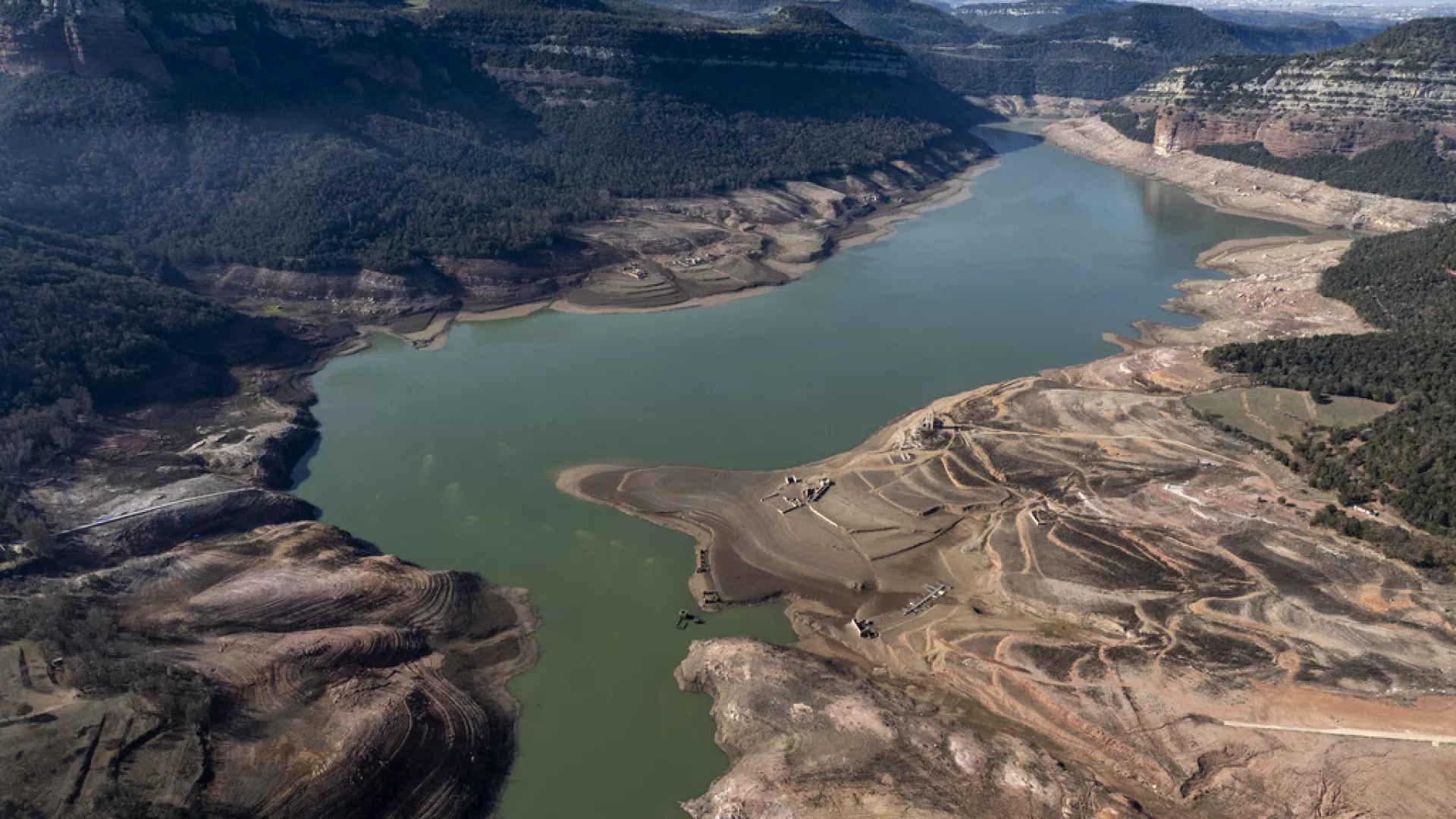
After more than 1,000 days of drought, the Catalan government has formally announced a state of emergency, extending water restrictions to Barcelona and the surrounding region. The situation is described as the worst drought in modern history.
Urbanisation, climate change and increased consumption are all factors which are intensifying our demand on water. Measures to tackle the water crisis range from reduction of water use, treating water to be recycled and finding more ways to capture water from new sources.
Food production and agriculture uses a significant portion of our freshwater supply (70% of all freshwater withdrawals globally) 1 and is a key challenge as our population continues to grow and urbanise. How will we provide a healthy and nutritious diet whilst reducing the strain our food systems have on our water use?
Our plot looked at a range of strategies to answer these questions, providing ways to grow and prepare food closer to the city whilst reducing water use. Locating residences side-by-side with this food industry also provides an opportunity to circulate water through multiple uses, further reducing consumption and creating additional benefits from water filtration through nature-based-solutions.
To effectively plan and design water as part of a buildings’ metabolic system, we must first understand our projected consumption across the varying building uses:

These consumption figures can be reasonably calculated when the variety of uses of our plot are considered in the design phase. Understandably, the industrial component of our plot accounts for the greatest water demand and was therefore the key focus of our measures and strategies to manage this.
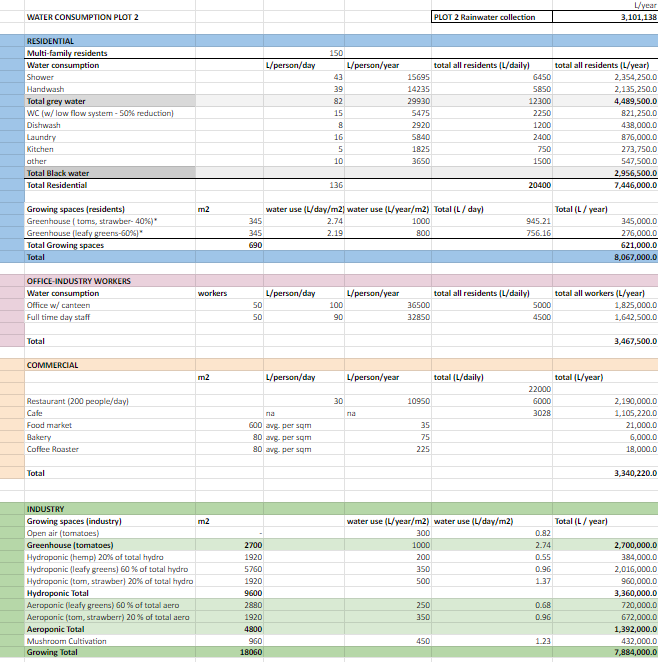
The first place to look to answer this demand is captured water from rainfall. Even in Barcelona, a location that experiences only 55 rainfall days a year, effective capture, storage and circulation of this water can meet a significant portion of our water need. Considerations like building material, rooftop design, filtration and storage systems are crucial when designing captured rainwater into the metabolic system of our plot.
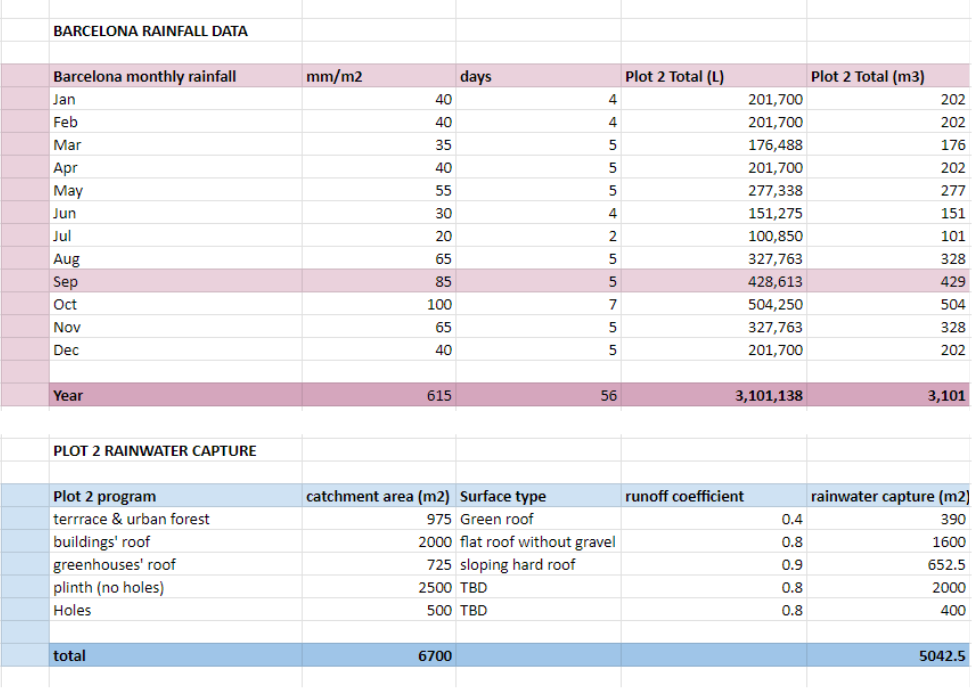
As well as capturing rainwater, strategies to recycle water between the residential and industrial uses of our plot were important to consider. Grey water from residential use accounts for 4.5 million litres of water per year and, when effectively treated and filtered, can be recirculated within our plot to irrigate the variety of grow spaces, which in turn utilise their own water recycling systems. The use of hydroponic and aeroponic grow spaces within our plot utilise technologies to minimise water use and as such minimise the water consumption of produce grown in this way.

There are a variety of ways to treat water captured from rainfall or recirculated from other uses. Methods of filtration involve removing particulate matter as well as killing bacteria and microbes in the water. Nature-based-solutions for water filtration offer a low-energy way to recycle water, using natural vegetation to treat and filter water, whilst providing additional benefits such as green walls which reduce plot temperatures and positively impact urban biodiversity.
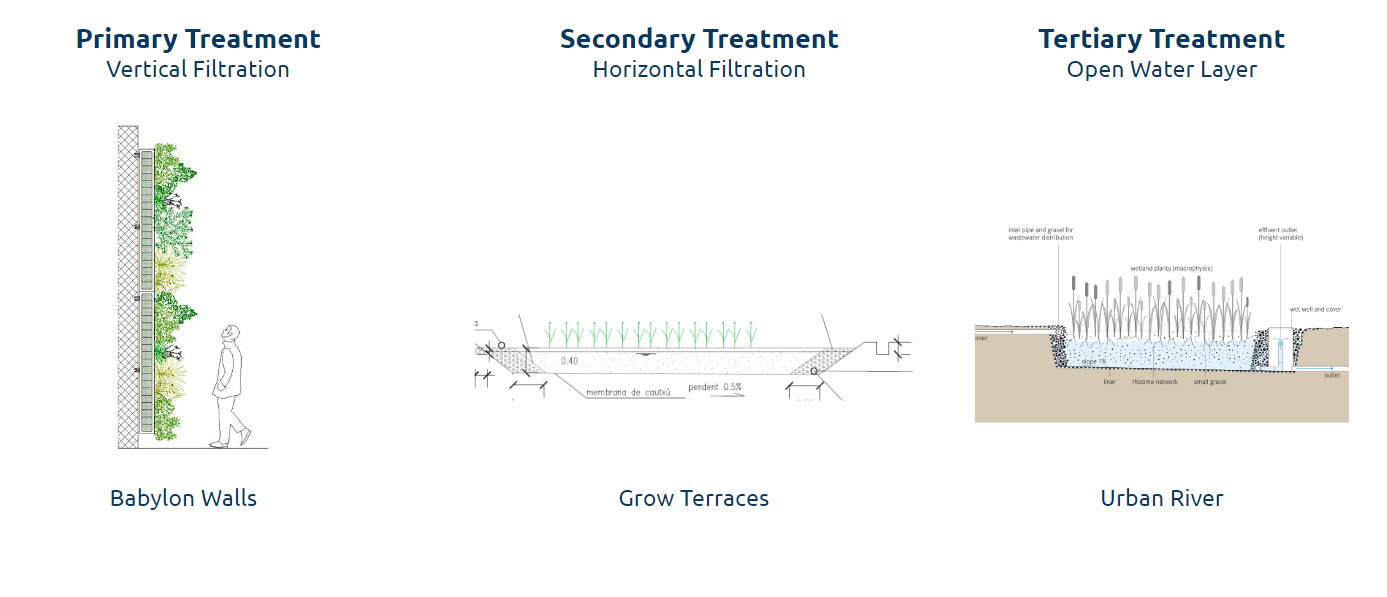
Proximity Food plot uses three NBS filtration strategies to treat and filter greywater and rainwater to be reused in the growing spaces of our industry. The first of these are vertical green ‘Babylon’ walls, which filter water through the root environments of plants which effectively remove particulate matter as well as other nutrients which are absorbed by the plant roots.
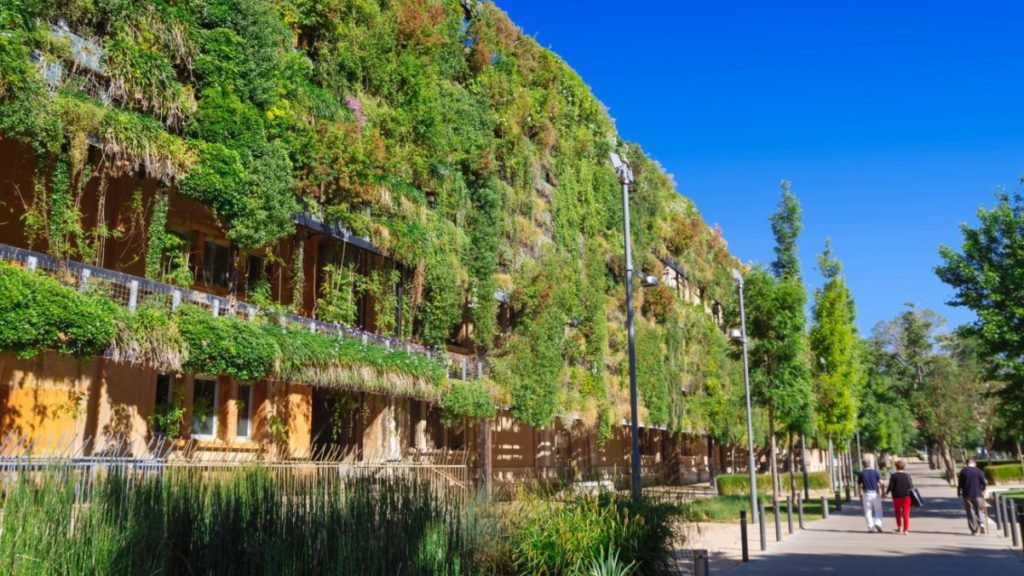
Our plot employed a similar Babylon wall system to filter water through a green facade as the primary filtration, before using horizontal filtration within the grow terraces as the secondary step. The tertiary filtration employed an open semi-natural water reservoir to filter through biological process and UV filtration, before that treated water was stored in storage tanks to be used in the industrial sector of our building.
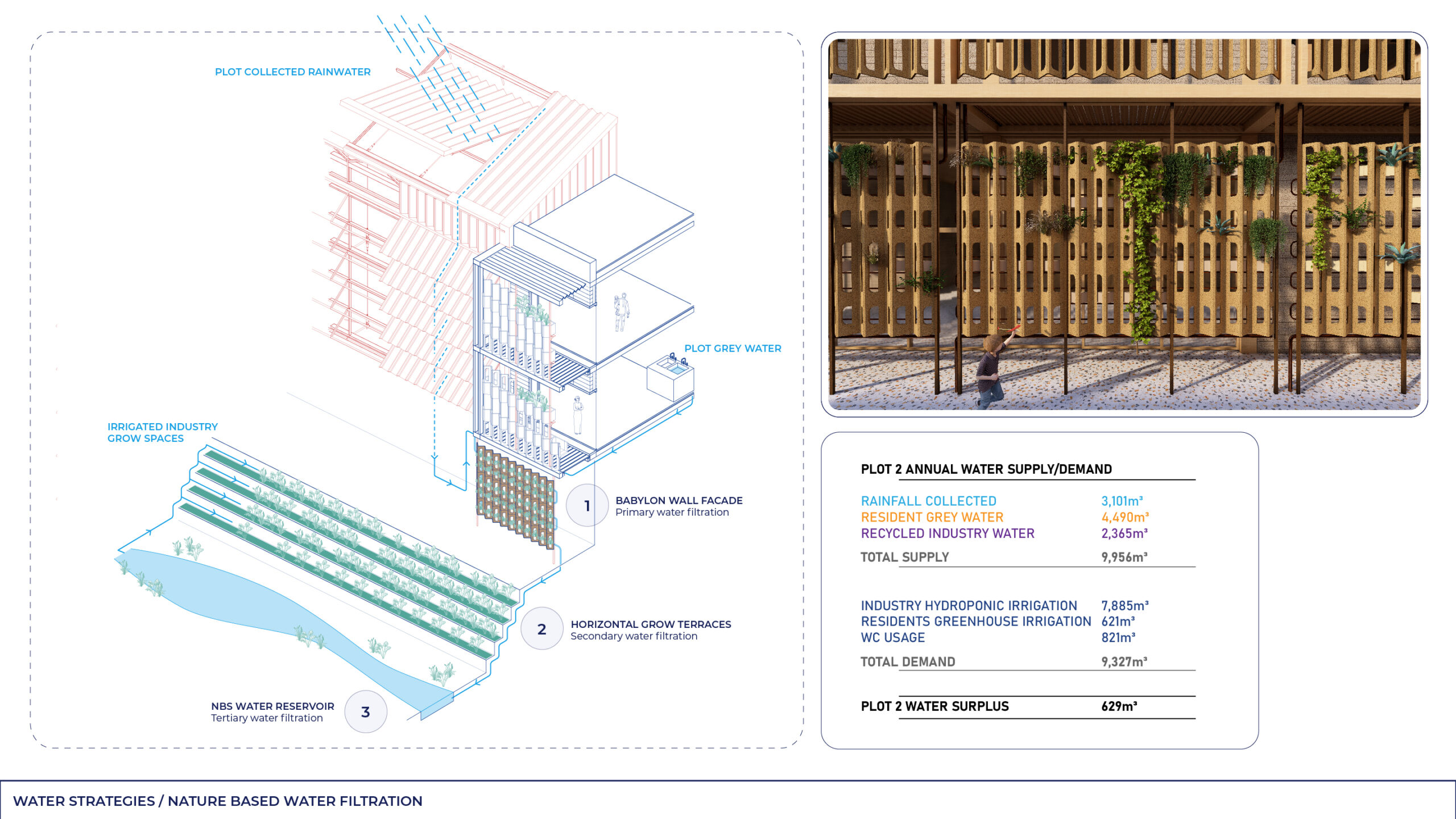
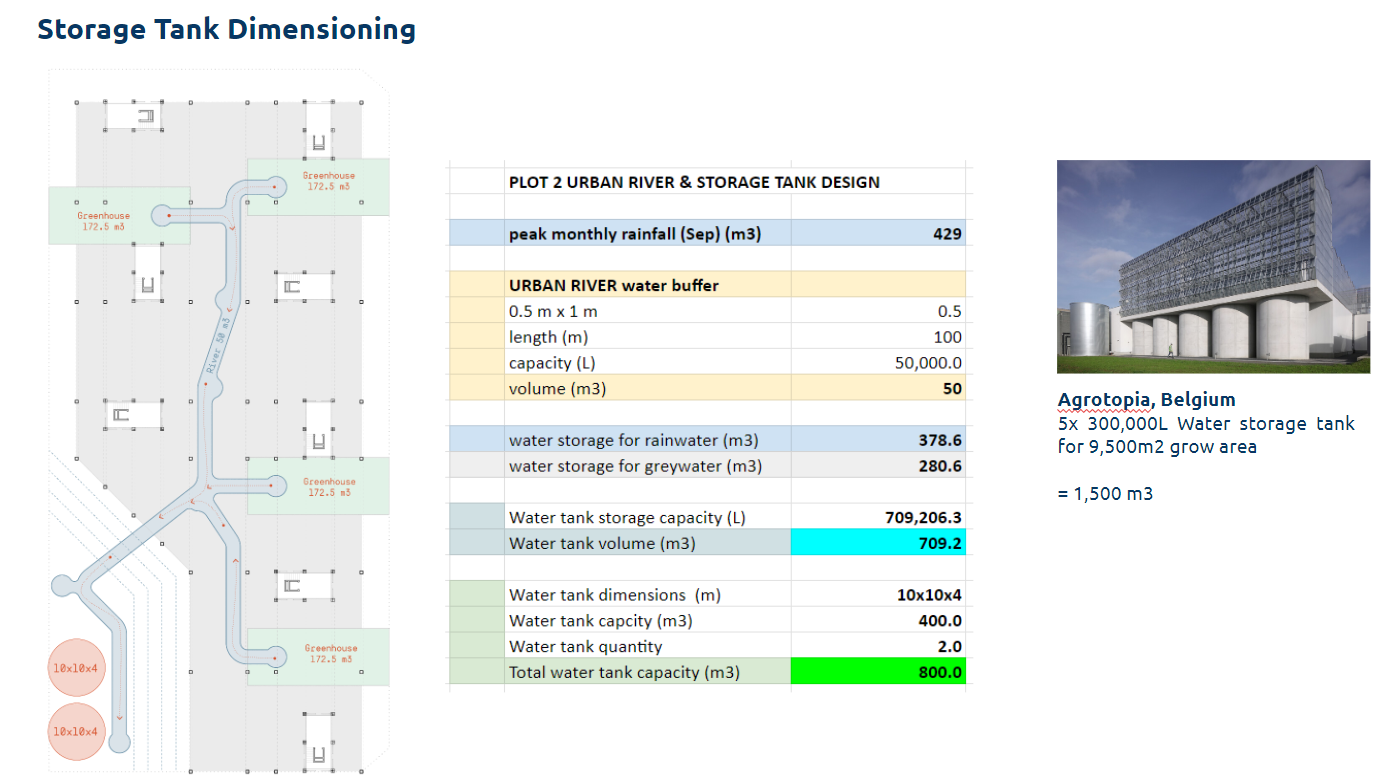

The overall water management strategies utilised in our plot are highlighted in the graphics below:
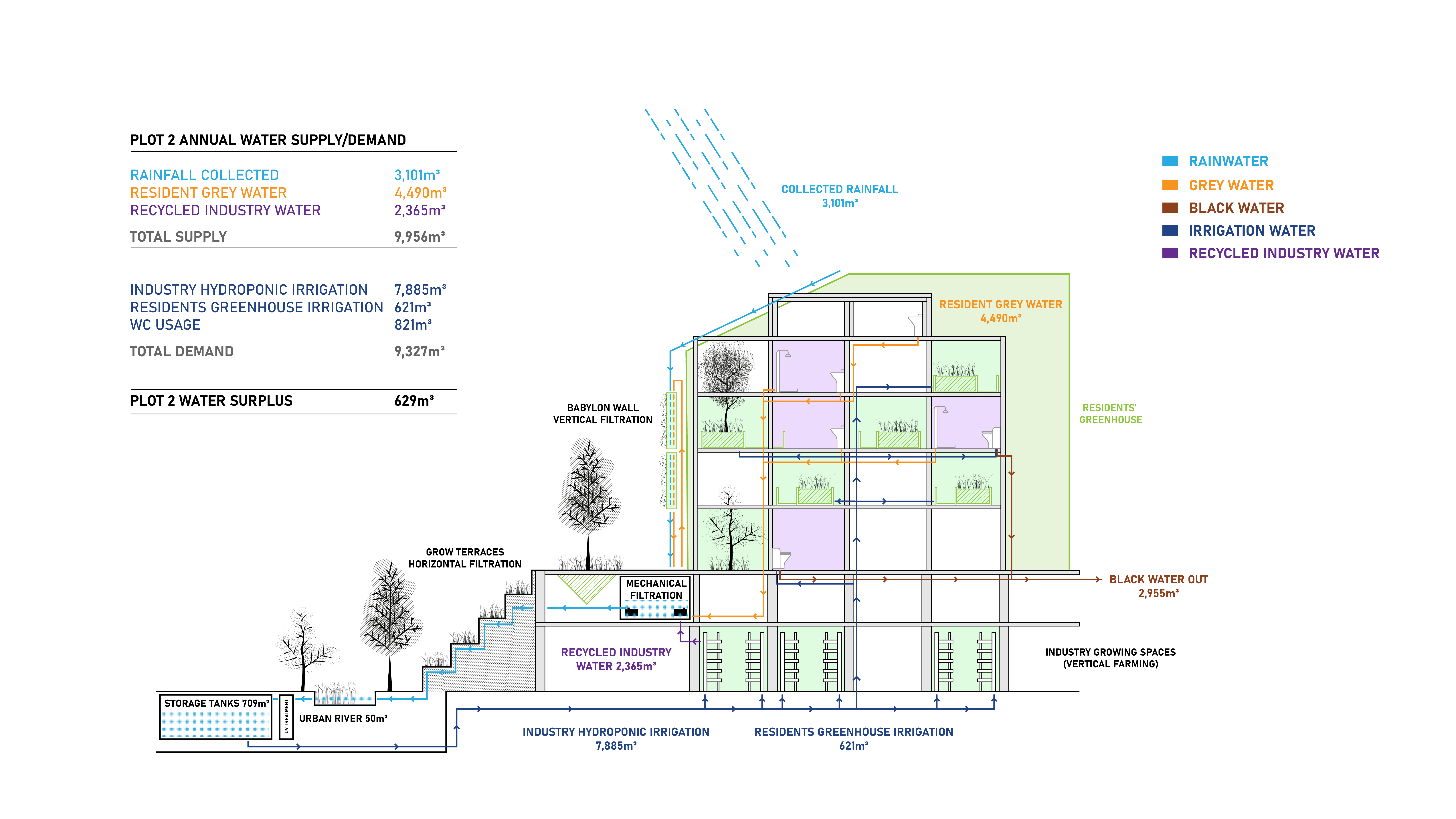
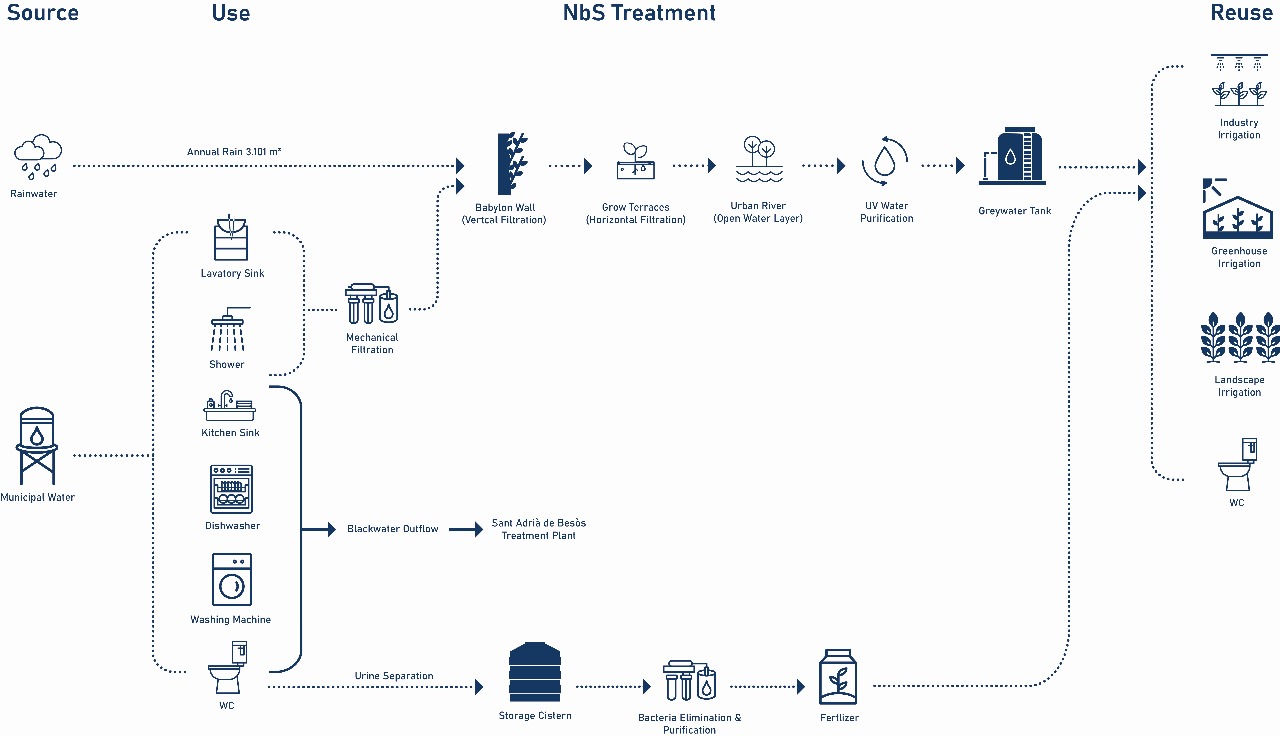
- Water in Agriculture (worldbank.org) ↩︎
- https://brainsre.news/aedas-homes-lanza-oferta-recompra-parcial-bono-verde/ ↩︎

